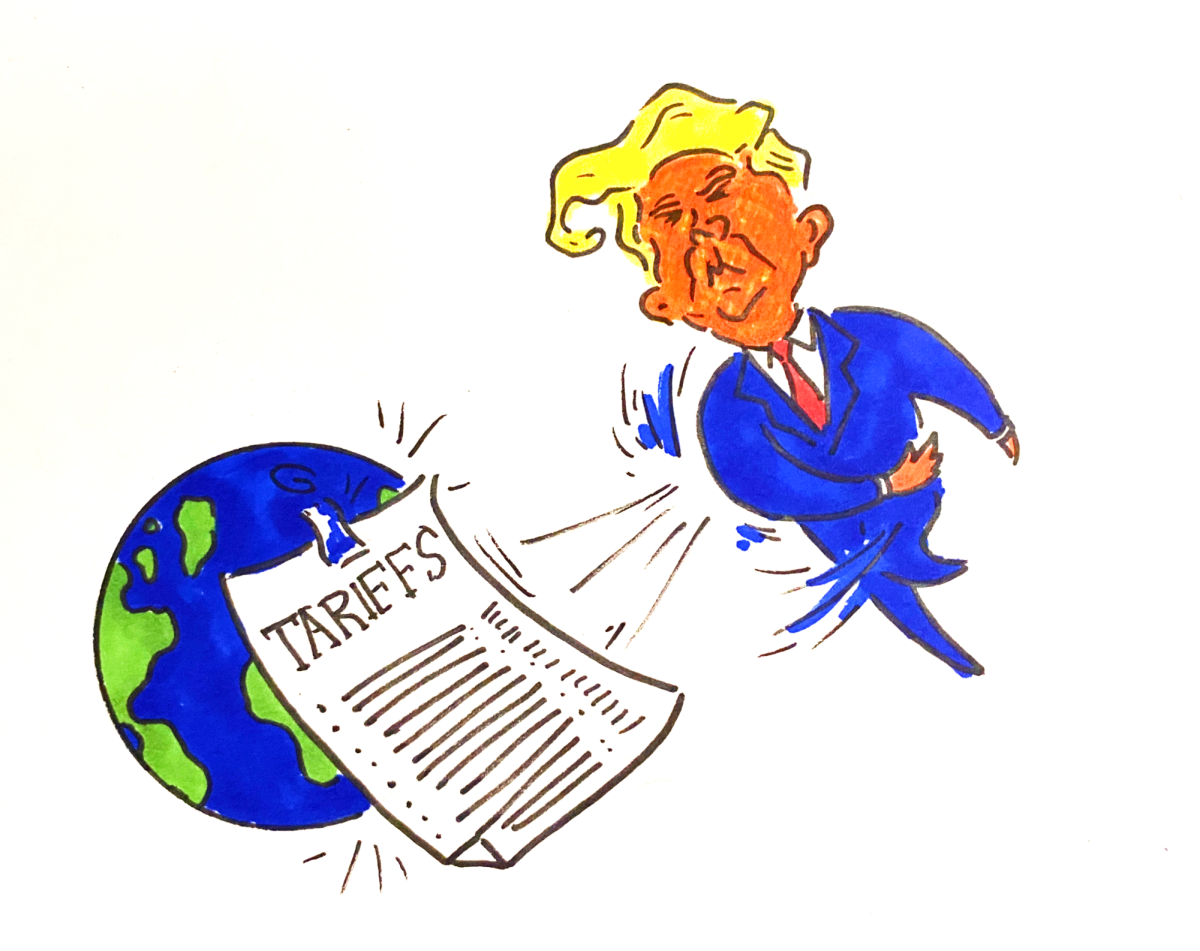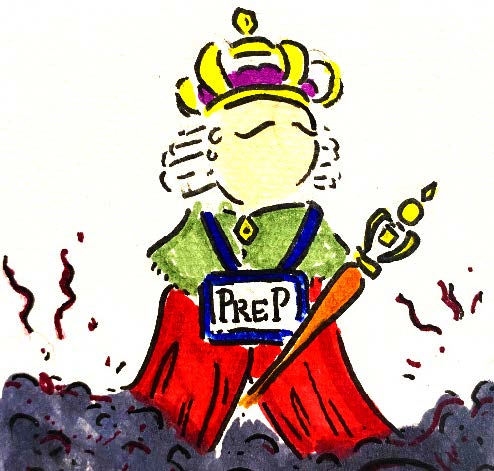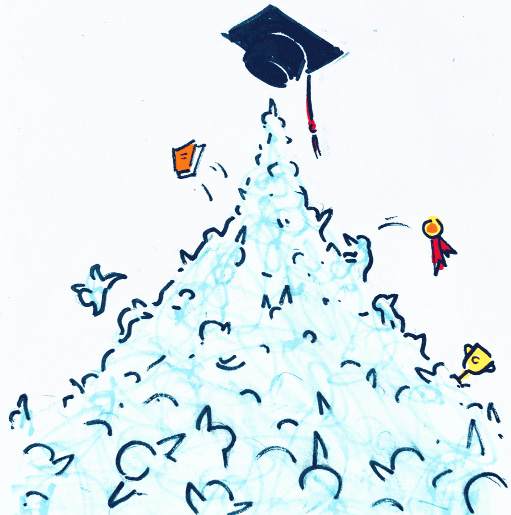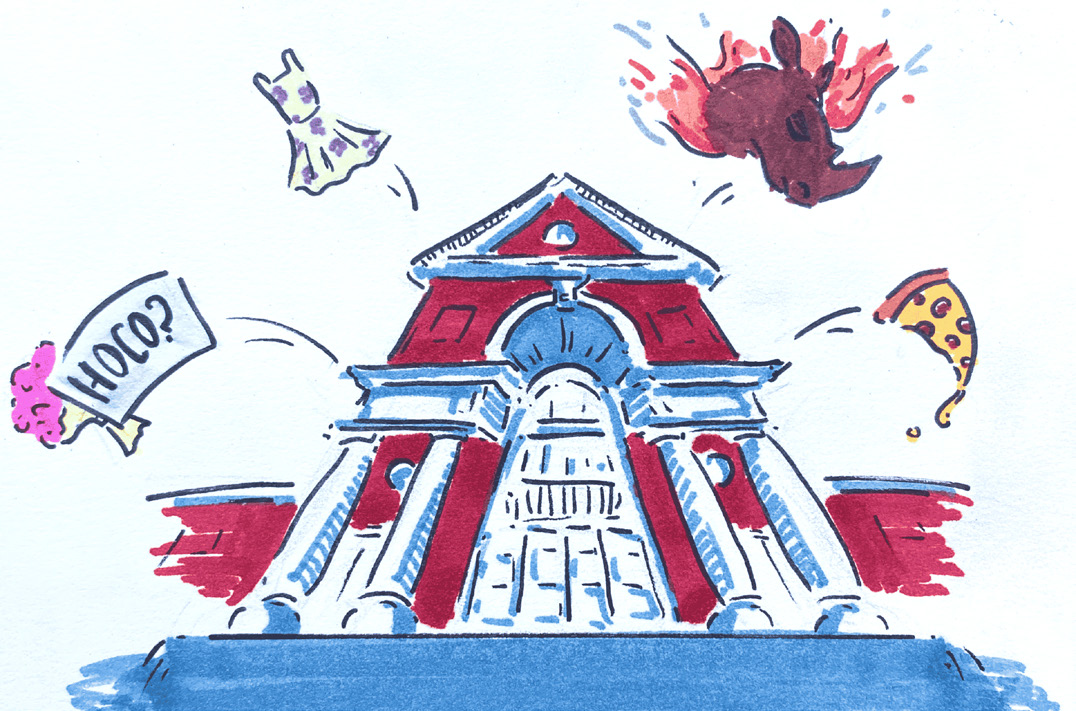TATE COLLINS ‘27
After months of economic uncertainty— starting with coercive tariffs and taking a brief excursion into universal and supposedly “reciprocal” tariffs—only one remains standing: a 145% tariff on goods from China. As even this final tariff seems to be heading for the chopping block, only one thing remains certain: Trump has no idea what he’s doing.
Trump has oscillated between arguing that tariffs are a tool for vengeance and saying they will “bring manufacturing back.” If used properly, tariffs could help chip away at either one of these goals. But first, Trump must decide what he wants to achieve.
Economists disagree on a lot, but there’s one economic principle that is indisputable: tariffs make prices go up. After “Liberation Day,” while Trump’s universal tariffs were still in place, Investopedia predicted the tariffs would have cost the average consumer $3,800 per year. This is no small sum.
But the greatest threat to the U.S. economy isn’t any specific tariff; it’s the stock market’s biggest enemy: uncertainty. In the past three months alone, Trump’s flip-flopping has caused a 10% drop in the S&P 500. That’s trillions of dollars in stocks wiped out. If Trump’s tariff mayhem is left unchecked, we risk exacerbating this economic turmoil. At the start of April, the major bank JP Morgan estimated a 60% probability of a recession occurring this year.
Tariffs aren’t a winning policy for trade, but the resulting chaos caused in the overall economy is far worse. The longer Trump deliberates on what he wants to achieve with tariffs, the more American citizens will suffer. If Trump is unable to figure out his tariff plan soon, not only will his approval ratings suffer—we all will.
JEREMY FANG ‘28
Trump’s disrupting tariff policy has been extremely contentious. While his trade policy might seem misguided, it’s important to remember that tariffs do have potential benefits. Tariffs protect American industry. Without tariffs, imported goods are significantly cheaper than their domestic counterparts. By increasing the price of foreign-made products, domestic products become more competitive in the market. Reliance on imports is also dangerous. It leaves us vulnerable to supply chain shocks, gives countries like China geopolitical leverage, and, in the rare event of crises like war, leaves critical industries stranded without the ability to produce essential goods independently.
Even more, tariffs can be wielded as a geopolitical club to compel policy changes or strategic concessions from trading partners. The Trump administration revealed that over 75 countries have begun negotiations to lower tariffs. The U.S. could secure more favorable trade deals, helping US exports and the economy as a whole.
Tariffs could also help mitigate our national debt crisis. The U.S. Budget Watch estimates that a universal 10% tariff may quadruple annual federal income from customs duties. Trump’s reciprocal tariff policy would bring in even more.
Does this mean I support Trump’s tariffs? No. The International Monetary Fund recently projected that the U.S. economy will grow 1.8% this year, down 2.7% from its previous estimate with a 40% chance of recession.
Instability in markets and rising costs discourage domestic investment and may even hurt manufacturing as a whole. Reciprocal tariffs by other countries makes things even tougher for U.S. exporters. Tariffs raise costs, hurting working class consumers.
At the end of the day, while Trump’s tariffs are likely anti-productive, it’s important to remember there is a rationale behind them.






